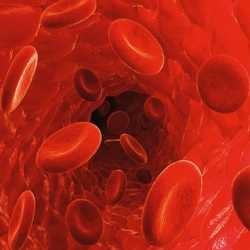
Chemotherapy is the standard treatment for cancer but it also causes strong side effects and kills not only cancer cells, but healthy ones, too. In order to mitigate the damage, researchers are working a new technique to deliver drugs with more precision, so healthy cells are more likely to be spared from chemical onslaught.
The scientists at Centro Nacional de Pesquisa em Energia e Materiais (CNPEM) and Universidade Estadual de Campinas (Unicamp) have developed a technique that uses silica nanoparticles to carry curcumin, a candidate drug against prostate cancer, the type of cancer the study has looked into. The particles were coated with folate, a vitamin that is naturally drawn to tumor cells.
The outcome of the study so far has been quite impressive. During in vitro tests, the nanoparticles killed around 70 percent of prostate tumor cells while only 10 percent of healthy cells of the same lineage were hit.
"Thanks to their unique metabolism, the tumor cells has 200 times more folate receptors on their surface than healthy ones. This way, nanoparticles coated with this chemical structure dodge the cells that don’t need to be attacked and are drawn to their real targets, which receive chemicals in higher concentration," said Mateus Borba Cardoso, who leads the research.
Silica and folate were chosen because they solve the difficulty that certain insoluble drugs have when they are transported in water, biological fluids and blood. The researchers then devised a way to insert the drugs in the pores of the silica nanoparticles during the formation of the compound. Drug molecules tend to settle between the pores as these are a more stable environment than the solution in which they are dispersed.
Additionally, silica is a solid base because it allows reactions to take place on its surface with ease, giving it an advantage over liposomes commonly used to coat several drugs against cancer but which do not allow folate to settle on its surface. It makes it easier to functionalize the nanoparticles and make them behave in a more direct way.
The researchers also make adaptations to the synthesis of the nanoparticle molecules so they have a certain affinity with those of the drug, which "steal" them from the medium in a process of electrostatic attraction between both of them. This way they are separated from the solution and carrying a great amount of the medication that is already trapped in their pores.
The scientists are now looking into obstacles of the method when applied in vivo. The major hurdles are related to the proteins found in the blood which, when in contact with silica, cover its surface and prevent the identification of folate.
To overcome this obstacle, the researchers are focusing on the multiple functionalization of nanoparticles by manipulating the surface of molecules so they achieve several functions at the same time. They reckon that by understanding the interactions between the proteins found in the blood and the surface of the nanoparticles, they will be able to devise methods that can can prevent the added substances from being affected and losing their function.
This way, the action of the nanoparticles would not be obstructed and they could become a viable alternative to conventional chemotherapy without the most adverse side effects.
